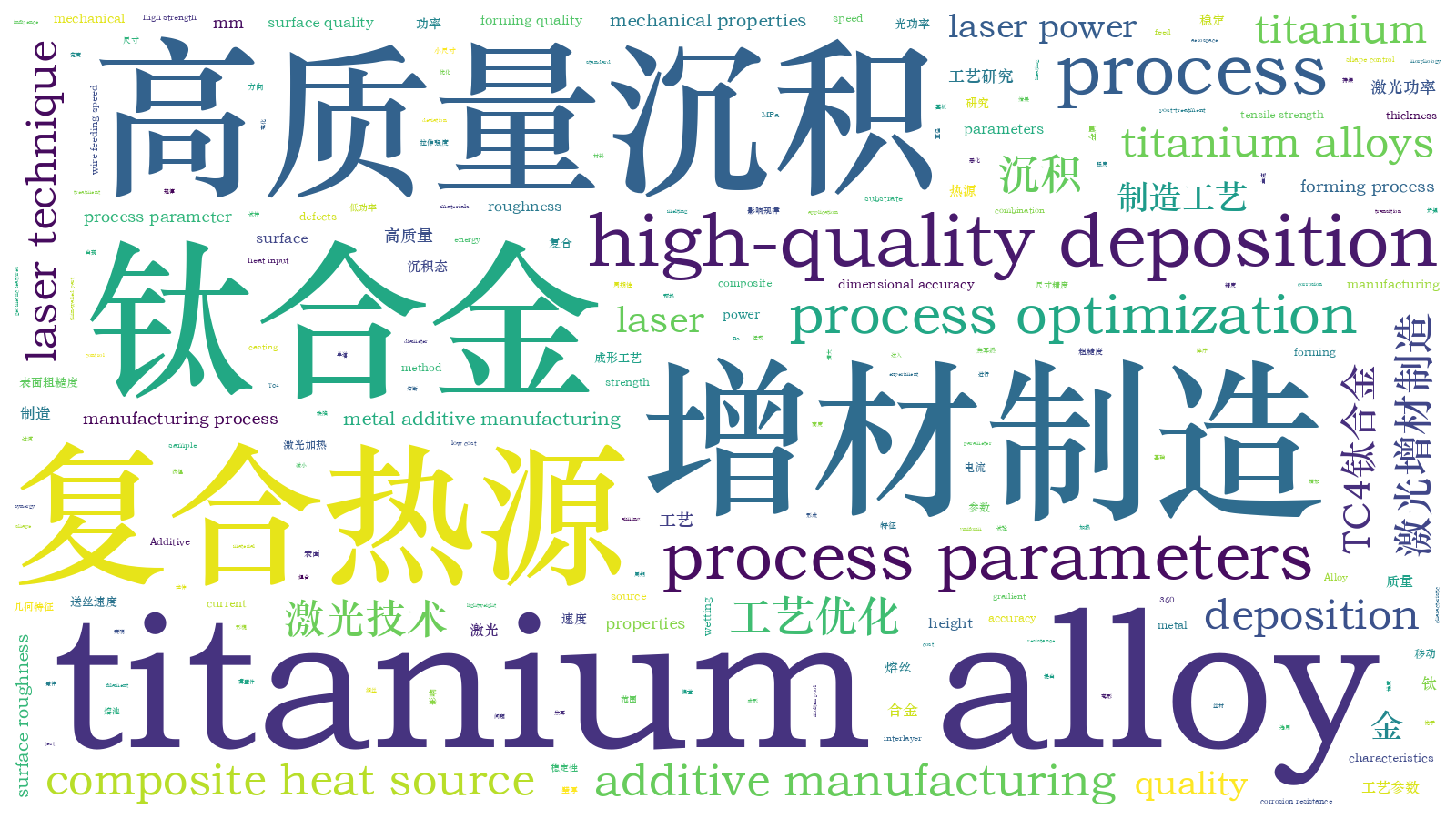复合热源钛合金熔丝高质量增材制造工艺研究  下载: 537次
下载: 537次
Titanium alloys are lightweight alloys with excellent properties including high strength, high stiffness, and good corrosion resistance. Hence, they are widely used in aerospace, automobile manufacturing, and other fields and are one of the most widely studied engineering materials in the field of additive manufacturing. Metal wire feed deposition forming is an important metal additive manufacturing process that has the advantages of low cost and 100% material utilization rate. However, the process characteristics easily lead to problems of poor surface roughness and low dimensional accuracy of parts, which limits the wide application of this process. Accordingly, to improve the surface roughness and dimensional accuracy of such parts, fine metal wires can be deposited by controlling the energy input. However, a method for obtaining high-quality titanium alloy parts has not been reported in the literature. In this study, the composite heat source of the laser and joule heat is used to fuse and deposit the fine titanium alloy wire with the diameter of 0.3 mm. The influence of process parameters on the geometrical characteristics of the deposited single bead is systematically investigated, and a stable combination of the forming process parameters is obtained. Then, based on a stable single bead, aiming at shape control, high-quality thin-walled parts are obtained using the gradient transition deposition method.
The process uses the synergy of a laser and joule current to deposit metal wires on a traveling substrate. Metal wires are continuously fed into the molten pool for continuous deposition as the substrate moves and rapidly solidify to form continuous smooth single beads. In this experiment, the effects of process parameters on the geometric properties of single bead are systematically studied, metallographic sample of single bead is prepared, and pictures and geometric characteristic data are collected. A high-quality titanium alloy thin wall is deposited by a stable single-layer deposition process parameter combination, the length and wall thickness of thin-walled parts are measured, and the line roughness and surface roughness of the thin-walled titanium alloy are determined. Finally, the thin-walled parts are cut into non-standard tensile specimens to test the mechanical properties in the deposition and travel directions.
The width and height of the deposited single bead are significantly affected by laser power. Under univariate conditions, with an increase in the laser power, the width of the single bead increases, the height decreases, and the wetting angle decreases (Fig. 3); with an increase in the wire feeding speed, the width remains stable, the height increases, and the wetting angle decreases (Fig. 4); with an increase in the travel speed, the width of the single bead decreases, the height tends to remain stable after reaching a certain speed, and the wetting angle does not change significantly (Fig. 5); the current does not affect the single bead deposition geometric features, but excessive current could worsen the formed morphology (Fig. 6). Thin-walled titanium alloys are deposited based on optimized process parameters, and it is found that the main factors affecting the deposition quality are the heat input and interlayer increment. By controlling the gradient input of the laser power and optimizing the interlayer increment and wire drawing method, the deposition quality is improved, and defects in the deposited parts are avoided. Finally, a titanium alloy thin-walled part without defects and with uniform width and height is obtained (Fig. 14). The average wall thickness of the titanium alloy thin-walled parts without post-treatment is 0.648 mm, with the thickness deviation of 0.004 mm (Fig. 15) and surface roughness (Ra) of 1.776 μm (Fig. 17). Results regarding the mechanical properties show that the tensile strength of the titanium alloy sample is 905.05-957.64 MPa (Fig. 18), and the mechanical properties are comparable to those of forging and casting (Table 3).
In this study, the effects of process parameters on the geometrical characteristics of deposited single bead are investigated using filament melting deposition process with the composite heat source of laser and joule heat. Using the composite energy generated by the laser and joule heat as the heat source and by controlling the heat input, titanium alloy is continuously deposited during the process of heating the wire, and high-quality thin-walled parts can be obtained at low laser power. By optimizing the deposition process, the defects and deficiencies in the deposition process are solved, and a thin-walled titanium alloy part with high surface quality and high dimensional accuracy is obtained. Accordingly, Ra is determined as 1.776 μm. The forming quality is much higher than that of mainstream wire feed additive manufacturing, and the maximum ultimate tensile strength is 957.64 MPa. The mechanical properties are comparable to those of forgings and casting.
冯启高, 王琳鑫, 王磊, 马利杰, 汤永凯, 李波波. 复合热源钛合金熔丝高质量增材制造工艺研究[J]. 中国激光, 2023, 50(8): 0802306. Qigao Feng, Linxin Wang, Lei Wang, Lijie Ma, Yongkai Tang, Bobo Li. Research on High-Quality Additive Manufacturing Process of Titanium Alloy Fuse with Composite Heat Source[J]. Chinese Journal of Lasers, 2023, 50(8): 0802306.







